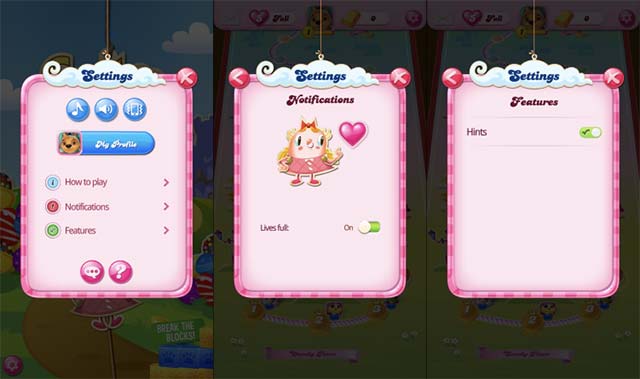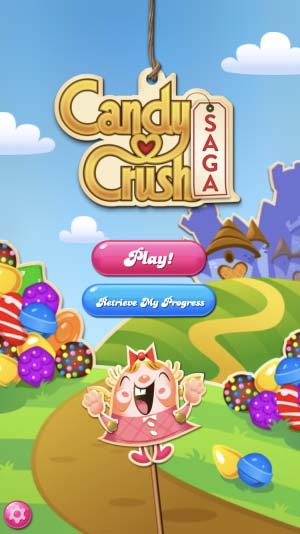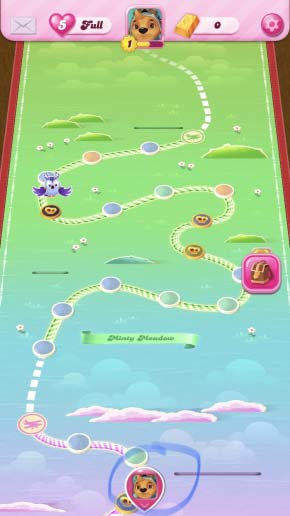What designers can learn from the amazing UX design of the Candy Crush game
Candy Crush is one of the most successful mobile games of all time, and according to many experts, the major contribution to this success is the user experience (UX) designed and optimized. Incredibly awesome of the game. So what can designers learn from Candy Crush's UX design?
Consistency
Consistency in UX design is one of the best ways to help users feel comfortable with your product, reducing confusion and getting used to.
Candy Crush's interface is highly consistent, sticking to the bright, playful tones that can be seen on fonts, sound effects, animations, etc. from one scene to another. suitable for the style and content of the game.

In addition, there are some minor conflicts that can be easily overcome. For example, in the settings menu, they use toggle sliders for suggestion and notification options. These options are also stored in separate submenus, and can easily be integrated into the main settings page.
Effective
Good design will get you to your goals as quickly and easily as possible. The menu system of Candy Crush is very simple, but still guaranteed to give players the full range of options they want.

Accessing the game for the first time, you will see a colorful introduction screen, the title of the game and only 3 optional buttons. If you want to play, just click the Play button in the middle, if you want to exit or install the system, you just need to click the gear icon in the lower left corner of the screen - very simple but effective.
However, there are still some disadvantages to talk about. For example, in the inventory interface, players have to click on a locked booster to see the criteria needed to unlock it, while completely possible to be integrated into the design to always be available. The same situation appears with the level introduction screen. You must press to find the criteria that should have been displayed. This is not difficult to identify and get to know, but for those who are fastidious, there will certainly be dissatisfaction.
Attention to details
One of the best ways to make a digital experience impressive is to surprise users. Candy Crush does this well by borrowing ideas from different design styles and making its own modifications, with the emphasis being on emphasizing the smallest details, giving players the surprise. about the care of the game design team.
For example, when you accidentally scroll too far on the level map, an icon will appear that will take you back to the current level position. You can play it in both landscape and portrait mode, a feature that most mobile games don't have. There are also a lot of elements in the game that are adjusted based on the orientation that makes the player feel more comfortable.

summary
Here are some notes that designers can refer to perfect the digital interface design for their products:
- Prioritize choosing a clear and readable font in your design, especially in the header. For a good experience, users first need to easily read and understand the content that you share on the interface.
- Do not put too many things together. For example, for the options menu, when you combine too many options in the options, the user will feel confused and 'stuffy'. Head to the balance by using the extra menus and displaying only the necessary information on a given screen. The organization chart and structure of the interface must be consistent with the nature and purpose of the product.
- Important information must be clearly visible and easily accessible. If you can't create a button or icon that clearly describes the function, be cautious and use things like descriptions, animations, or sounds to help users easily understand the meaning.
- Learn from many other areas to optimize the user interface. Another approach is to experiment early and often with diverse user groups and even those who may not be potential customers for your product.
You should read it
- Find inspiration to design user interface with UIDB
- 75 great user interface design ideas you need to know - Part 1
- 75 great user interface design ideas you need to know - Part 3
- Microsoft has revealed the new Windows 10 interface, inviting you to view and comment
- Google Drive refines the user interface, making viewing folders easier
- The user interface to play is fun but if you use it will really drive you crazy
- Want to create a web interface where to start?
- How to Become a UI Designer
May be interested
- Software that consumes the most battery power on smartphones
 an analysis by avg said that on average, smartphone users in the us installed about 30 applications. in particular, messaging, social networking and entertainment software are the leading causes of battery consumption on android devices.
an analysis by avg said that on average, smartphone users in the us installed about 30 applications. in particular, messaging, social networking and entertainment software are the leading causes of battery consumption on android devices. - Best web interface design software
 web design is hard work that requires designers to always learn the new design trends and suitable for modern.
web design is hard work that requires designers to always learn the new design trends and suitable for modern. - Top Windows Phone games loaded more in the week
 plants vs zombies, my talking tom, candy crush saga, subway surfers, skyforce, gourd, contra, fifa 13 ... are the games for windows phone to be downloaded a lot during the week
plants vs zombies, my talking tom, candy crush saga, subway surfers, skyforce, gourd, contra, fifa 13 ... are the games for windows phone to be downloaded a lot during the week - 2048 will make you forget Flappy Bird once existed
 after candy crush and flappy bird, mobile users have found a new hobby: 2048, a super addictive puzzle game.
after candy crush and flappy bird, mobile users have found a new hobby: 2048, a super addictive puzzle game. - 15 great tools for professional designers
 fortunately, there are tools and resources to help designers deal with real changes. they can also meet the increasing demands of customers.
fortunately, there are tools and resources to help designers deal with real changes. they can also meet the increasing demands of customers. - Top 7 UX design tools, leading UI
 to attract website visitors, not just a coherent layout and beautiful image. although design quality is always an important factor, designers do not always pay much attention to the site's user interface (ui) and user experience (ux).
to attract website visitors, not just a coherent layout and beautiful image. although design quality is always an important factor, designers do not always pay much attention to the site's user interface (ui) and user experience (ux). - Summary of the hottest technology news of December 2
 operating cortana on windows 10, restoring contacts deleted in gmail, 10 events caused the internet to explode, revealing the white blackberry classic, candy crush saga officially landed in windows phone, kaspersky internet security 2015 has a running version mac os x, the diseases of computer addicts, ... are the most interesting news of the week!
operating cortana on windows 10, restoring contacts deleted in gmail, 10 events caused the internet to explode, revealing the white blackberry classic, candy crush saga officially landed in windows phone, kaspersky internet security 2015 has a running version mac os x, the diseases of computer addicts, ... are the most interesting news of the week! - 10 add-ons for Firefox are needed for the 'people' design
 here are some of the most popular and suitable firefox add-ons for graphic designers or related jobs, especially for web designers ...
here are some of the most popular and suitable firefox add-ons for graphic designers or related jobs, especially for web designers ... - Top Android games loaded more in the week
 my talking tom, subway surfers, talking angela, candy crush saga, hay day, fishing diary ... are the games for android readers downloaded the most last week.
my talking tom, subway surfers, talking angela, candy crush saga, hay day, fishing diary ... are the games for android readers downloaded the most last week. - Tips for playing The Amazing Spider-Man 2
 for spider-man fans, the amazing spider-man 2 is a video game not to be missed. the game faithfully reproduces the plot of the original movie, role-playing the superhero in search of evil criminals to protect the peace of the city.
for spider-man fans, the amazing spider-man 2 is a video game not to be missed. the game faithfully reproduces the plot of the original movie, role-playing the superhero in search of evil criminals to protect the peace of the city.










 Fitbit free Premium pack for 90 days
Fitbit free Premium pack for 90 days Apple plans to bring a notch and Face ID displays to MacBook models
Apple plans to bring a notch and Face ID displays to MacBook models The Google Play Store displays the app's rating, capacity, and downloads right in the search results
The Google Play Store displays the app's rating, capacity, and downloads right in the search results A new update of Windows 10 is faulty, affecting the network connection of some devices
A new update of Windows 10 is faulty, affecting the network connection of some devices Microsoft launches Project Newsbar beta
Microsoft launches Project Newsbar beta The Polish government opened its own Minecraft server to let young people play games at home, instead of gathering in the streets
The Polish government opened its own Minecraft server to let young people play games at home, instead of gathering in the streets